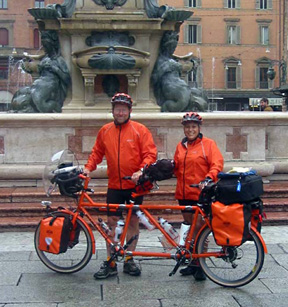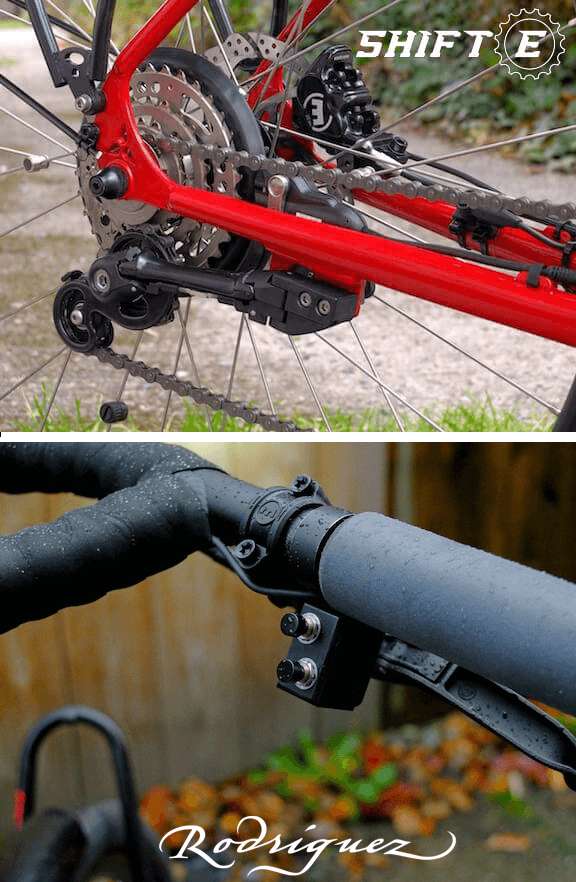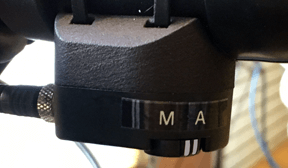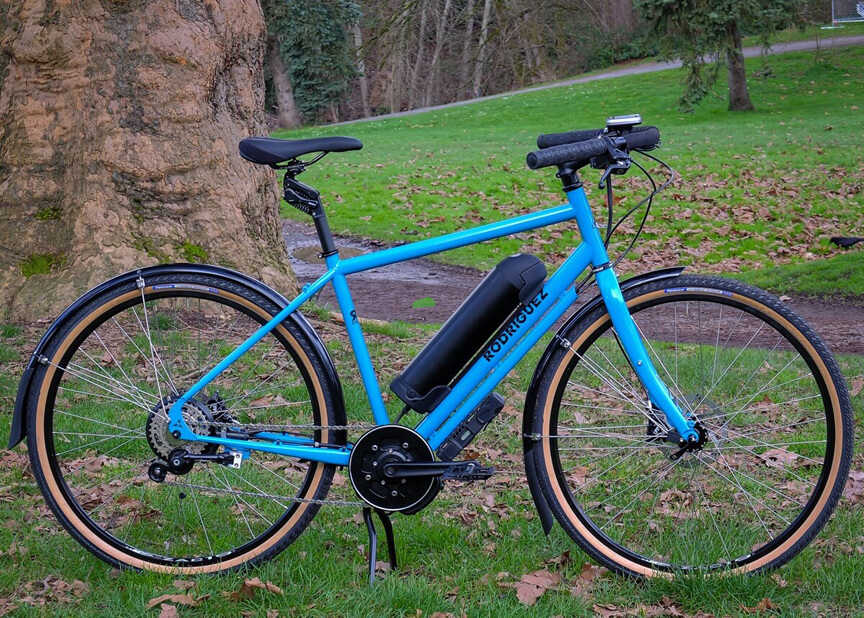
Rodriguez Disruptor e-bike
Rodriguez just made choosing an e-bike a lot easier!
The Rodriguez Disruptor
It seems e-bikes are everywhere in 2020. Formerly a niche product, e-bikes truly have gone mainstream. The number of e-bike companies has exploded and there’s a huge variety of models to choose from. Most of these companies have very little history in the bicycle world. The differences between e-bike models is much greater than you see between regular bikes, and lots of folks don’t know what to make of all of the options and variables. After this read, you'll be educated about e-bikes in general, as well as the seemingly subtle, yet important differences in how we've approached it at Rodriguez.
A quick bit of history:
Way back in 2000 (wow that's 2 decades ago now) there was a lot of buzz in our industry about electric assist bikes. We even made a few Rodriguez e-bikes back in the day using Heinzmann, German made motors. One of them was made for the owners of Pike  Brewing Company, Charles and Roseanne. We built them a beautiful orange Rodriguez 8-Ball tandem with a Heinzmann motor attached to a big battery that lived in the rear rack.
Brewing Company, Charles and Roseanne. We built them a beautiful orange Rodriguez 8-Ball tandem with a Heinzmann motor attached to a big battery that lived in the rear rack.
Riding an electric assist bike in that era felt much different than they feel today. Charles and Rosanne described it to me as "it feels more like we're riding a motorcycle when we have the motor on the bike." The reason for that 'motorcycle' feel was that the motor was controlled by a throttle on the handle bars. It’s not an intuitive control for someone that wants to be riding a bicycle, and most people felt it was jarring to ride.
As for Charles and Roseanne, we built their bike so that they could remove the motor and battery easily and make the bike a regular bike if they wanted. That's exactly what they did after their experience with early electric assist technology. Charlie and Roseanne weren’t alone. Interest in electric assist bikes remained low for several years. There were some major obstacles to overcome before they were truly ready for the masses. Some were immediately obvious, and some were yet to be discovered.
The Original Issues
Battery technology: Batteries of that era were very heavy, and provided only enough power to ride the bike a very short distance before it died. At that point the rider just had a really heavy bike with a lot of DC motor drag to overcome as they tried to finish a ride. In addition to that, the battery had to be run completely down before being charged or the 'memory' would be messed up. If that happened, it got less and less charge each time.
Underpowered Motors: The motors back then were much less powerful than what's available today. They could get the bike up to speed ok, but an underpowered motor drains the battery a lot faster. The more powerful motors available today will give you much better battery performance. Most inexpensive e-bikes today still use the low power motors, so consider that when shopping.
Motor Control: In 2000, computer technology was not nearly as advanced and the 'motorcycle' throttle was the only reliable option available. This was a huge obstacle for creating an electric assist that felt like riding a bike instead of a scooter or motorcycle. Change was coming, thankfully.
Fast Forward to 2014:
 About 6 year ago, e-bike interest started perking up again here in Seattle. It seems that sitting in traffic, watching bicycles fly past is a great motivator for an e-bike purchase. Our customers started asking about them again, so again we locked our investigative minds onto the development of the best e-bike good enough for our customers. Since our customers are cyclists, we went about it from that viewpoint first. What we found surprised us, and moved us to develop an e-bike that was VERY different than what we first set out to build. Let me explain. I'll take through our findings as well as the evolution of the Rodriguez Disruptor model. You may not know it yet, but it is the e-bike you want if you're a cyclist, or even if you haven't ridden a bike in 20 years. It's truly a bike that disrupts conventional thinking in the e-bike world.
About 6 year ago, e-bike interest started perking up again here in Seattle. It seems that sitting in traffic, watching bicycles fly past is a great motivator for an e-bike purchase. Our customers started asking about them again, so again we locked our investigative minds onto the development of the best e-bike good enough for our customers. Since our customers are cyclists, we went about it from that viewpoint first. What we found surprised us, and moved us to develop an e-bike that was VERY different than what we first set out to build. Let me explain. I'll take through our findings as well as the evolution of the Rodriguez Disruptor model. You may not know it yet, but it is the e-bike you want if you're a cyclist, or even if you haven't ridden a bike in 20 years. It's truly a bike that disrupts conventional thinking in the e-bike world.
The great news that we found:
- Batteries have seen massive improvement since 2000. They’re half the weight and 4 times the power of those old batteries, so riders no longer have to worry about running out of power. Charging can be done anytime you feel like you want to charge it, without fear of damaging the battery’s “memory”. This takes away two e-bike objections that almost everyone I've talked to over the last 20 years has had.
- Improved Motors up to 750watts (1 full horsepower) are now legal and available to use on an e-bike. That's a whole bunch of 'help' when you need it. Keep motor power in mind when shopping e-bikes.
- Some more advanced, modern e-bikes use a torque sensor built into the cranks instead of a throttle. A torque sensor measures how hard you are pedaling, and adds the motor’s power to yours in a smooth gradient. The amount added is set by you, so you can choose just a little help, or a lot. Torque sensor technology has matured to a point that it has a very natural feel to it. In 2000, it was mostly an idea (a rainbow unicorn if you will), but a few companies kept working on it. 20 years later there are a few very good options available. Now, with the right torque sensor, your e-bike rides just like a regular bike but you feel like a superhero!
As it turns out, once these problems were solved, we discovered some other issues that really needed to be addressed.
As we began our development for the Rodriguez e-bike, we initially thought we would build a regular bicycle with a really powerful motor and a great battery. Once we started building, however, we started to discover that a lot of 'regular bike' features and components are not well suited for an e-bike. I see a lot of companies today trying this same approach because they haven’t learned what we've learned through experimentation. An e-bike is not supposed to replace your bicycle, but rather, needs to be a vehicle that can replace your car. Our customers still want to ride actual bicycles for bicycling.
So what does that mean for the Rodriguez e-bike?
We've landed on some very important conclusions, and I think you'll be glad to know about them
Fit and Comfort are different on a e-bike: You'll sit all the time on your e-bike, and don't need to stand for hills. This means that you need a whole different fit adjustment than on your regular bicycle. You'll also be hitting bumps in the road at a MUCH faster speed, so you'll want bigger, softer tires and a stiffer frame. You'll also want a Kinekt suspension seatpost to complete your comfort trifecta.
Safety: Since you're riding at very high speeds (for a bicycle), you'll want very powerful brakes. You'll also want to be assured that your toes don't hit the wheel or fender when you're turning. Things are happening fast on these machines.
Weight: We found that it was still very important to keep an e-bike at a 'liftable' weight as many of our customers want to be able to put them on the bus rack, or onto a bike rack for transport. Many of the e-bikes out there weigh well over 60 pounds, and some of them are near 80!
These things were surprising to learn, and totally changed our focus on what kind of e-bike we wanted to build and bear the Rodriguez name.
Gearing: Here's where things really fall apart!
It turns out that gearing for an e-bike is nothing like gearing for a bicycle should be. 27 'manually shifted' speeds for human legs is great, but in a car? Imagine having a stick shift in your car with 27 gears that you had to shift through as you got up to speed after every stop light. You'd be shifting constantly! Of course a car has a powerful engine, and only needs 3 or 4 gears to work effectively. Same is true for a motorcycle.....what about an e-bike?
For Comparison, consider this: On my regular bike, using my 1 Human-power 'motor', I don't mind shifting manually. I ride up hills at much slower speeds than on flat ground. Grinding up a hill at 5mph (really low gear), then riding at 15mph for a few 'flat' miles (medium gear), before bombing back down that same hill at 22mph (high gear). For starts and stops from stoplights I need small increment gear increases for my spindly 1 Human Power 'motor' to get up to speed. 27 gears work very well for this.
Riding an e-bike is MUCH different: With my 1 Horsepower motor (along with my spindly legs), I can ride up that same hill at 22mph. Then I ride the flat ground at 22mph, and I bomb down that same hill at 22mph (get the drift?). The only shifting that needs to happen is getting up to speed after a stop light/stop sign. I don't need small increments for that 1 Horse Power Motor. Actually, just like in a car, small increments are annoying because you just have to constantly shift up and down. It's a lot nicer if you have just 4 widely spaced gears like a car.
Shifting under massive force: The proper number of gears is one thing. The fact that bicycle shifting systems are designed to shift under human power, and even then not very well, was a big problem too. Have you ever thrown your chain shifting under load? Of course you have....everyone has. Image that same shift with a 1 horse power motor assisting you. As I rode e-bikes around our neighborhood, I found myself constantly shifting the gears, and those shifts were much more labored than usual. On my regular bike, I don't mind shifting, but on the e-bike it seemed kind of ridiculous to have to shift manually at all. Add to this, shifting under this added load wears out your chain and gears much faster on an e-bike.
These were the biggest obstacles yet to overcome, and nobody was addressing them. Bicycle shifting had not really evolved in 100 years. Well, we have a solution, and it's a great one!
By the 'clicking' of my thumbs, something wicked this way comes:
Right in the middle of our quest for the perfect e-bike, I got a call from Mark at Browning. I've been hounding him for the last 22 years about a product that they've been working on that I wanted to see on the market. They've been working on, testing, and producing a bicycle shifting system over the last few decades, and it couldn't be more perfectly designed for an e-bike. Just like the batteries, motors, and torque sensor components, it would take another 20 years to develop the perfect e-bike shifting. The great news is that's how long this system has been in development. It's a ready made solution for the e-bike shifting dilemma, and it's only available on our new Rodriguez Disruptor models. We're producing it now under the brand Shift-E™. The system is 20 years ahead of anything on the market today.
Here are some Shift-E™ advantages:

- Shift under any load: I mean ANY load. This bike can be shifted at any point, with any amount of pressure that you or the motor can dish out! There is NO other bicycle shifting that can do that. It doesn't even put extra wear on the drivetrain to shift under full force either. Throwing your chain under a bad shift is a thing of the past with Shift-e.
- Feather touch controls: In manual mode (yes there is an automatic mode) shifting is done effortlessly with feather touch, electronic shifters. Carpal tunnel? No problem.
-
 Automatic shifting mode: I initially thought that this was cool, but I would never use it myself. Once I shifted into automatic, I never went back to manual mode. Let Shift-E™ decide what gear your bike should be in to protect your motor. Like an automatic car transmission, it knows just when to shift. You've got to try it to believe it.
Automatic shifting mode: I initially thought that this was cool, but I would never use it myself. Once I shifted into automatic, I never went back to manual mode. Let Shift-E™ decide what gear your bike should be in to protect your motor. Like an automatic car transmission, it knows just when to shift. You've got to try it to believe it.
Introducing the 2020 Rodriguez Disruptor Models
All of this learning has led to the development of an e-bike we feel worthy of the Rodriguez name. The Rodriguez Disruptor is years ahead of other e-bikes on the market, and we can’t wait for you to try it.
Disruptor Differences:
- Hand made in Seattle, custom for your perfect fit
- Invented and made by a company with years making custom bicycles
- Choose your color
- Lighter weight than other e-bikes
- Exclusive Shift-E drivetrain
- 1 horse power, mid-drive motor
- Heavy duty Lithium Ion battery
Call (206-527-4822) or email us today To set up a time to test ride this Seattle machine!







